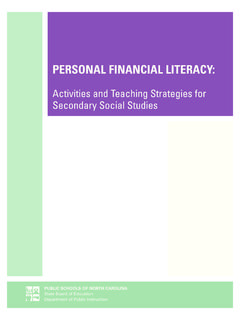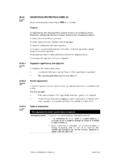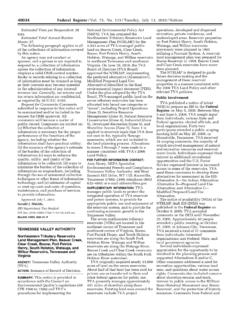Transcription of Indigenous Peoples - Lands, Territories and …
1 BACKGROUNDER. Indigenous Peoples - Lands, Territories and natural Resources Hundreds of Indigenous tribespeople in north-eastern India are rushing to reclaim lands from which they were removed decades ago for the construction of a hydro-electric In a case lasting 11 years, the Australian Indigenous Larrakia people were recently denied their claim to native title over the Northern Territory city of An Indigenous tribe in Malaysian Borneo set fire to a campsite run by loggers in April this year, highlighting their concerns that timber and palm oil industries are encroaching on Indigenous The Mapuche from Patagonia in Southern Chile and Argentina are concerned about foreigners buying up land in the region, saying that it results in many natural wonders being off-limits to them and stifles development of resources in a poor Around the world, Indigenous Peoples are fighting for recognition of their right to own, manage and develop their traditional lands, Territories and resources.
2 At the international level, their representatives are advocating for the adoption of the Declaration on the Rights of Indigenous Peoples by the UN General Assembly. The Declaration the result of more than two decades of negotiation - emphasizes that Indigenous Peoples '. control over their lands, Territories and resources will enable them to maintain and strengthen their institutions, cultures and traditions and to promote their development in accordance with their aspirations and needs . The sixth session of the UN Permanent Forum on Indigenous Issues, to be held at United Nations Headquarters from 14 to 25 May 2007, will focus on these issues.
3 More than a thousand Indigenous participants from all regions of the world will come together with government representatives, UN. agencies, academia and civil society at large to state their views, voice their concerns and suggest solutions regarding their lands, Territories and natural resources. A relationship at risk Not being in control of the land , or not being able to protect it or have access to the natural foods and medicines that grow on it, gives us a really shaky future . Indigenous Peoples ' relationship with their Ramona Peters, a Mashpee Wampanoag and Indigenous rights activist traditional lands and Territories is said to form a core part of their identity and spirituality and to be deeply rooted in their culture and history.
4 Stella Tamang, an Indigenous leader from Nepal, summarizes the relationship saying, [I]ndigenous Peoples have an intimate connection to the land ; the rationale for talking about who they are is tied to the land . They have clear symbols in their language that connect them to places on their land .in Nepal, we have groups that only can achieve their spiritual place on the planet by going to a certain location .v . Indigenous Peoples see a clear relationship between the loss of their lands and situations of marginalization, discrimination and As Peoples , we reaffirm our rights to self- determination and to own, control and underdevelopment of Indigenous communities.
5 According to Erica manage our ancestral lands and Territories , Irene Daes, a UN Special Rapporteur in 2002, The gradual waters and other resources. Our lands and Territories are at the core of our existence . deterioration of Indigenous societies can be traced to the non- we are the land and the land is us; we have recognition of the profound relation that Indigenous Peoples have to a distinct spiritual and material relationship their lands, Territories and resources. with our lands and Territories and they are inextricably linked to our survival and to the preservation and further development of our Indigenous Peoples are also acutely aware of the relationship between knowledge systems and cultures, the environmental impacts of various types of development on their conservation and sustainable use of biodiversity and ecosystem management.
6 Lands, and the environmental and subsequent health impacts on their Peoples . Through their deep understanding of and connection with the The Kimberly Declaration. The Voice of Indigenous Peoples , International land , Indigenous communities have managed their environments Indigenous Peoples Summit On sustainably for generations. In turn, the flora, fauna and other resources Sustainable Development, 20-23 August available on Indigenous lands and Territories have provided them with 2002. their livelihoods and have nurtured their communities. However, according to Indigenous leaders this relationship is increasingly at risk.
7 Victoria Tauli-Corpuz, an Indigenous Igorot leader from the Philippines and Chairperson of the UN Permanent Forum on Indigenous Issues, has stated that With the increasing desire of states for more economic growth, senseless exploitation of Indigenous Peoples ' Territories and resources continues unabated. vi Threats to Indigenous Peoples ' ecosystems include such things as mineral extraction, environmental contamination, the use of genetically modified seeds and technology and monoculture cash crop production,. Rights to lands and Territories Mixed Progress In recent decades, many countries have reformed their constitutional and legal systems in response to calls from Indigenous movements for legal recognition of their right to the protection and control of their lands, Territories and natural resources (as well as with respect to their languages, cultures and identities; their laws and institutions; their forms of government and more).
8 Latin America has led the way with such constitutional reforms taking place in Argentina, Bolivia, Brazil, Colombia, Guatemala, M xico, Nicaragua, Panama, Paraguay, Peru, Ecuador and Venezuela, a number of which go so far as to acknowledge the collective nature of Indigenous Peoples (an essential element of land rights).vii However, in his March 2007 report, the UN Special Rapporteur on the situation of the human rights and fundamental freedoms of Indigenous people , stated that: Although in recent years many countries have adopted laws recognizing the Indigenous communities' collective and inalienable right to ownership of their lands, land -titling procedures have been slow and complex and, in many cases, the titles awarded to the communities are not respected in practice.
9 Viii For example, by 2005, the Indigenous Aymara people in Bolivia - which make up 60 to 80 per cent of the total population - had filed land claims covering 143,000 square miles, but due to the slow, under-funded titling process, only 19,300 miles had been granted by the end of Privatization Furthermore, the UN Special Rapporteur also noted that privatization of Indigenous lands has been increasing. In Cambodia, a land law passed in 2001 recognizes the collective right of Indigenous Peoples to own their lands, yet over the last decade, some million hectares of forest have been expropriated to large timber companies through concessions.
10 A further million hectares have been declared as protected land , leaving the Indigenous communities with limited access to the forest resources necessary for them to survive. In Canada, the federal and provincial governments are negotiating agreements with First Nations Peoples of British Columbia which recognize only a small portion of these communities' traditional lands as Indigenous reserves, leaving the remainder to be privatized. According to the Declaration on the Rights of Indigenous Peoples adopted by the Human Rights Council, Indigenous Peoples have the right to determine and establish priorities and strategies for their self-development and for the use of their lands, Territories and other resources.
















